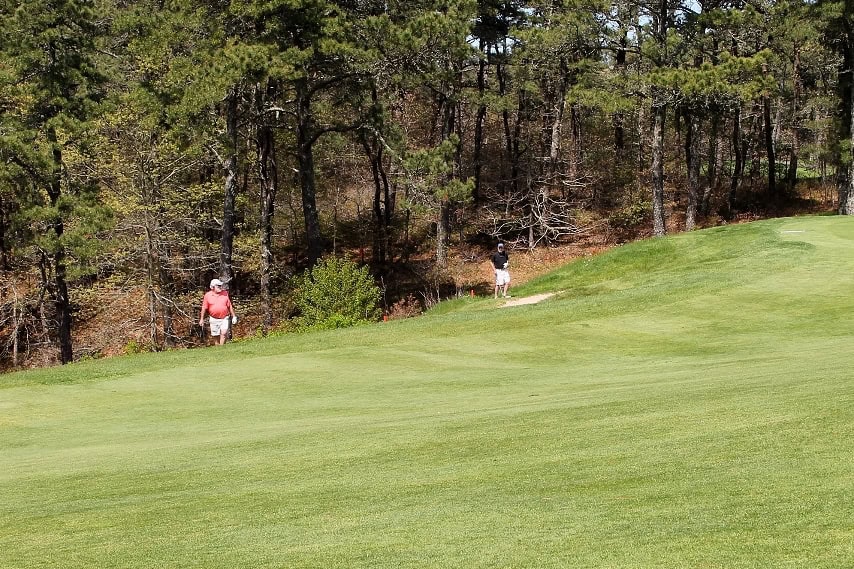by Rob Duca
One of the most difficult situations all amateur golfers face is dealing with shots from uneven lies. Adjustments must be made to your stance, ball position and, in extreme cases, even to your swing when dealing with uphill, downhill or sidehill lies.
Unfortunately, many amateurs don’t have a clue about what changes should be made in these situations in order to strike the ball solidly and cleanly. So, here are some tips that will fill you with confidence when playing Cape Cod’s rolling terrain.
- Balance
Any shot from an uneven lie begins here. Too often, golfers lose balance during the swing, which ends any hope of making good contact with the ball. With uneven lies, gravity will push your body in the direction the ground is angling towards, so make sure to establish a strong core and stay centered over the ball.
- Ball Above Feet
In this scenario, the ball tends to draw left for a right-handed player, while hitting shots fat is common because a ball that lies above your feet is closer to your body.
Therefore, grip down on the shaft to avoid sticking the clubhead into the ground behind the ball. Make sure to take more club than you would normally need for the distance, and aim slightly right.
Finally, lean your body into the hill, setting most of your weight on the balls of your feet from takeaway through finish.
- Ball Below Feet
This scenario produces the opposite effect, leading to shots that fade and thin contact. It is essential that you focus on balance, because the ball is now further from your body. Loss of balance leads to thin shots. And, course, aim slightly left in this case, but not too much, which can result in a slice spin on the ball.
At setup, grip the handle at the very end, and squat low for stability and to reach the ball. Keep the majority of your weight and pressure concentrated in your heels all the way through to your finish.
- Downhill Lie
Most players tend to hit this shot fat because they catch too much turf behind the ball. Set your body angle to match the slope, so that your shoulders feel like they are parallel to the ground and you are leaning into the hill.
It’s important to remember that shots will go further as a result of “de-lofting” the club, so take a club with extra loft. Depending on the severity of the slope, you might have to use one or two clubs less because the lie is going to cause the ball to come out on a lower trajectory.
Also, a lie with the ball below your feet is likely to cause a fade or slice, so aim to the left.
- Uphill Lie
Generally speaking, amateurs aren’t spooked by uphill lies because they feel like they can launch the ball into the air.
At setup, lower your right shoulder to match the slope, and maintain this throughout the swing. Position the ball forward in your stance, and keep most of your weight on your downhill foot.
Don’t lean into the hill, and make sure to take extra club as a result of a higher trajectory shot.
Conclusion
Hopefully, these tips provide a better understanding of how uneven lies affect ball flight, and what you need to do with your setup to adjust.
Most important, remember that good balance leads to good contact. As a practice tool, seek out slopes that offer uneven lies and work on the adjustments you need to make so that it’s not foreign to you when they come up during a round.
Basically, your goal when playing uneven lies is to adjust your posture and ball position so that the lies feel as though they are more even. This will help your balance and result in solid ball-striking.

